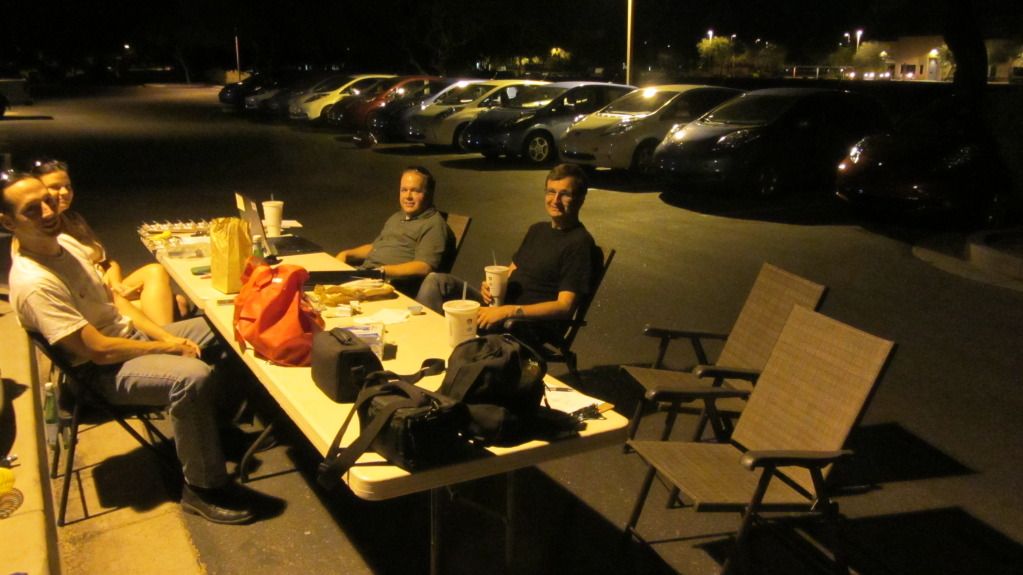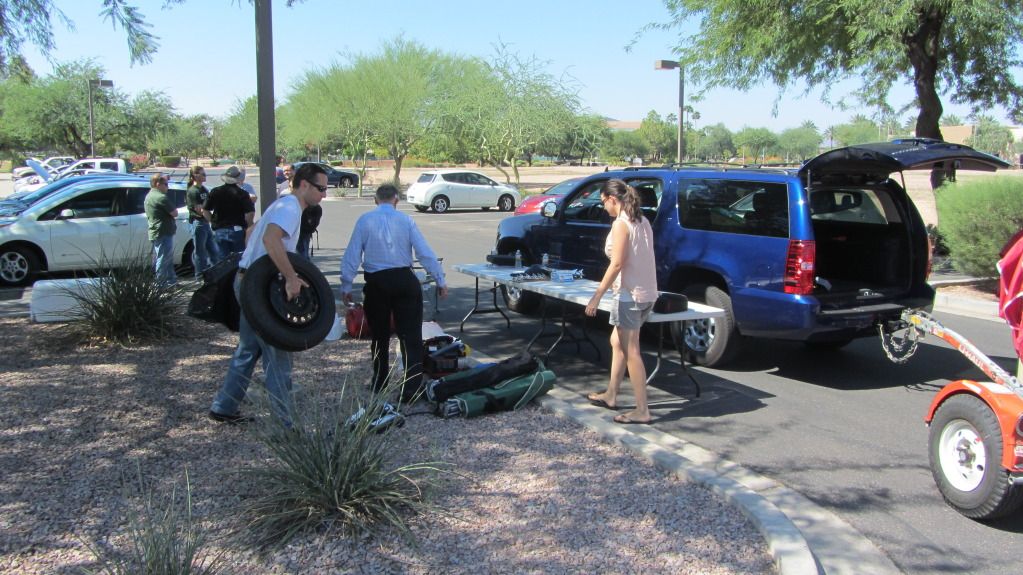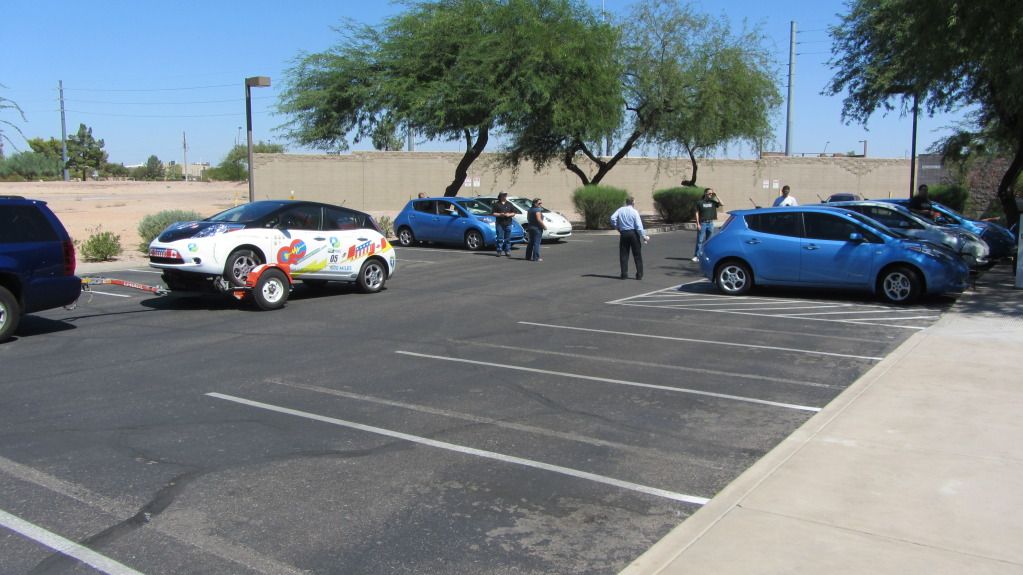adric22
Well-known member
When will we be able to see the raw data collected? Or did I miss something?

TonyWilliams said:edatoakrun said:At what temp and at what rate did you charge to get that 250 gid reading?
Temps are listed in one of the previous posts ^^^ up there. All charges were topped off with a Blink L2, however, some/many were started with the DC charger. My car arrived with about 60% in the battery from San Diego, and we DC charged it to some value higher than 60% (it didn't take long), then topped off with L2. All cars were parked outside in the same ambient air. All cars had a minimum of 4 hours between the end of charge and the test drive...
="TonyWilliams"
Does anybody in Phoenix have access to a very new LEAF that one of our volunteers can drive for 84 miles ? A dealer?
Unfortunately, even a newly purchased LEAF in Phoenix is already likely to have advanced battery degradation just from sitting in the brutal hot Phoenix sun on the dealer's lot. So, any possible candidate LEAF would need to first pass the Gidmeter test at 100% charge.
Then, I'm confident we could find a volunteer to make that early morning drive in the same weather conditions we experienced Saturday...
edatoakrun said:Is there some unique quality to Arizona roads or atmospheric conditions you're looking for?
Can't you replicate the same constant speed near-level driving conditions at the same temperatures, over a large part of the USA today?
DaveinOlyWA said:temperature i can reproduce since it will be warm but the elevation will be a challenge. its mostly under 300 feet around here and when you do get over 1000 feet its nearly impossible to find any stretch of road in any direction that resembles flat.
Did they do a Le Mans start? :lol:shrink said:Found a couple photos:
At dawn, just before takeoff:

edatoakrun said:unless you have a location with a ~constant temperature where you can park for many hours to "soak" your pack, just before completing your charge to "100%".
That is for flat road. All our flat roads are close to the lakes (and thus mostly sea level). Lots of altitude variations kill range.edatoakrun said:DaveinOlyWA said:temperature i can reproduce since it will be warm but the elevation will be a challenge. its mostly under 300 feet around here and when you do get over 1000 feet its nearly impossible to find any stretch of road in any direction that resembles flat.
Tony states each 1,000 ft. of altitude increases range by ~1.5%, on his chart.
TonyWilliams said:edatoakrun said:unless you have a location with a ~constant temperature where you can park for many hours to "soak" your pack, just before completing your charge to "100%".
Yes, go beck and read the protocol. Charge, and sit in the same outside (not in a garage) ambient temps for a minimum of 4 hours (we were WELL over 4 hours).
Unless you're trying to correct for charging temperature... We didn't, but it was Phoenix in the early to late evening for every car that charged. Every car had six temp bars, of course. There isn't a smoking gun here, and any small differences will have minuscule overall range effects.
...If they all had 6 bars on the battery temp gauge, I doubt you could have had more than ~20 F variation in battery temperatures at the times the charges were completed.
No one, AFAIK, has accurately calculated how much more capacity the batteries have (assuming the BMS does not intervene at some higher temperature) when the battery temperature is increased this amount, but I think most would say this is probably no more than 2% to 3%. Not huge, but probably quit a bit more significant than the accuracy caused by the variable levels your windows are open while you drive, or for that matter, whether your tires had 36 or 40 lbs of pressure.
A simple way of avoiding most of this inaccuracy in future "mass" tests might be to charge the entire "fleet" to anywhere from 80% to 95%, let the temperature normalize to near ambient (overnight, in your situation) and top them off just before the test.
evnow said:That is for flat road. All our flat roads are close to the lakes (and thus mostly sea level). Lots of altitude variations kill range.edatoakrun said:DaveinOlyWA said:temperature i can reproduce since it will be warm but the elevation will be a challenge. its mostly under 300 feet around here and when you do get over 1000 feet its nearly impossible to find any stretch of road in any direction that resembles flat.
Tony states each 1,000 ft. of altitude increases range by ~1.5%, on his chart.
edatoakrun said:There are errors in Tony's range chart. His assessment of the effects of ascents and descents being the most significant.
edatoakrun said:There are errors in Tony's range chart. His assessment of the effects of ascents and descents being the most significant.
edatoakrun said:Not a "smoking gun", but a significant and avoidable source of inaccuracy, IMO.
I guess it depends on what range effects you consider "miniscule"(sp). Do you disagree with the opinion I posted last night?
...If they all had 6 bars on the battery temp gauge, I doubt you could have had more than ~20 F variation in battery temperatures at the times the charges were completed.
No one, AFAIK, has accurately calculated how much more capacity the batteries have (assuming the BMS does not intervene at some higher temperature) when the battery temperature is increased this amount, but I think most would say this is probably no more than 2% to 3%. Not huge, but probably quit a bit more significant than the accuracy caused by the variable levels your windows are open while you drive, or for that matter, whether your tires had 36 or 40 lbs of pressure.
A simple way of avoiding most of this inaccuracy in future "mass" tests might be to charge the entire "fleet" to anywhere from 80% to 95%, let the temperature normalize to near ambient (overnight, in your situation) and top them off just before the test.




TonyWilliams said:2:44am, just 25 minutes before I launched my car, "Black782", on the test course. Five of us stayed up all night, and one of those pictured doesn't even own a LEAF anymore!
Enter your email address to join: